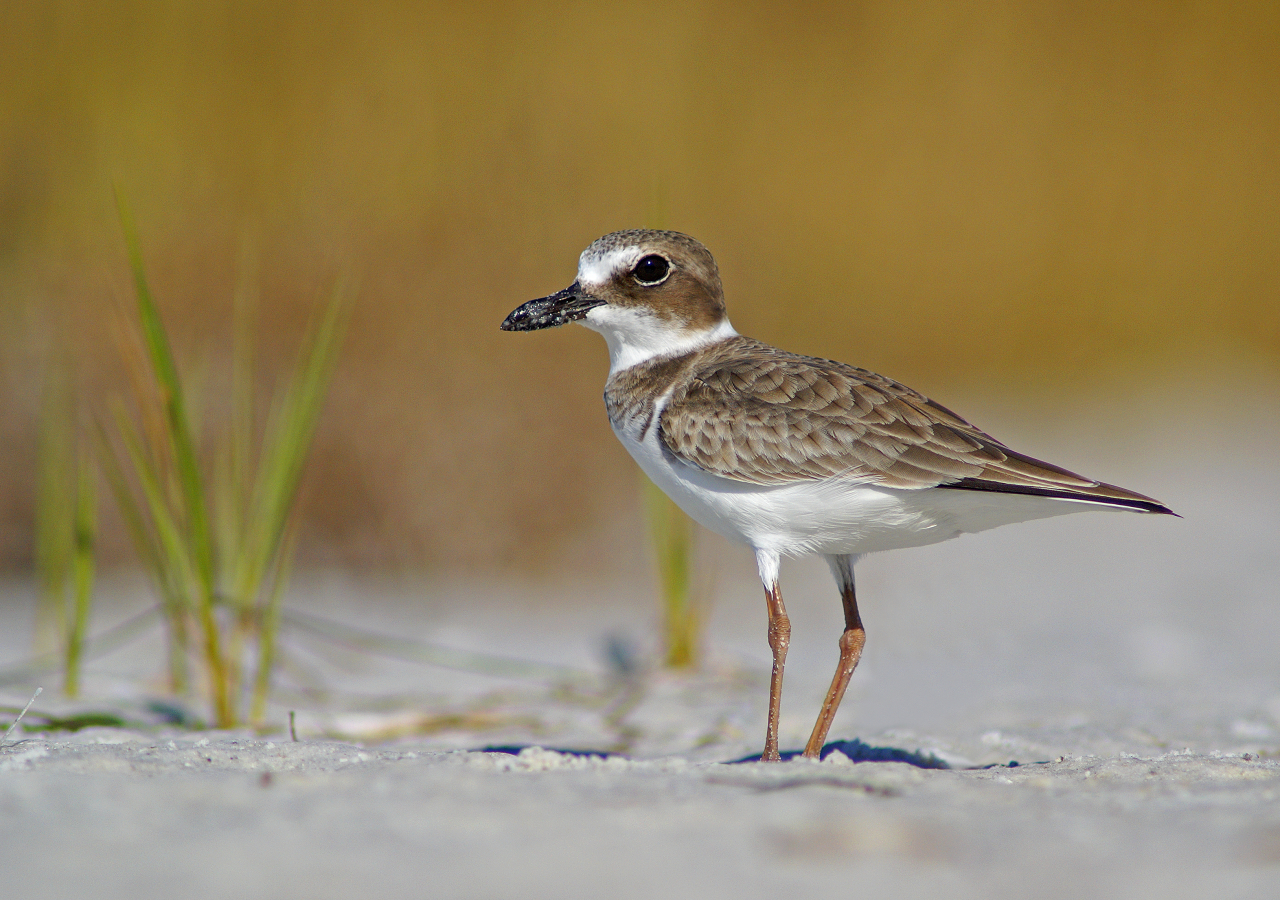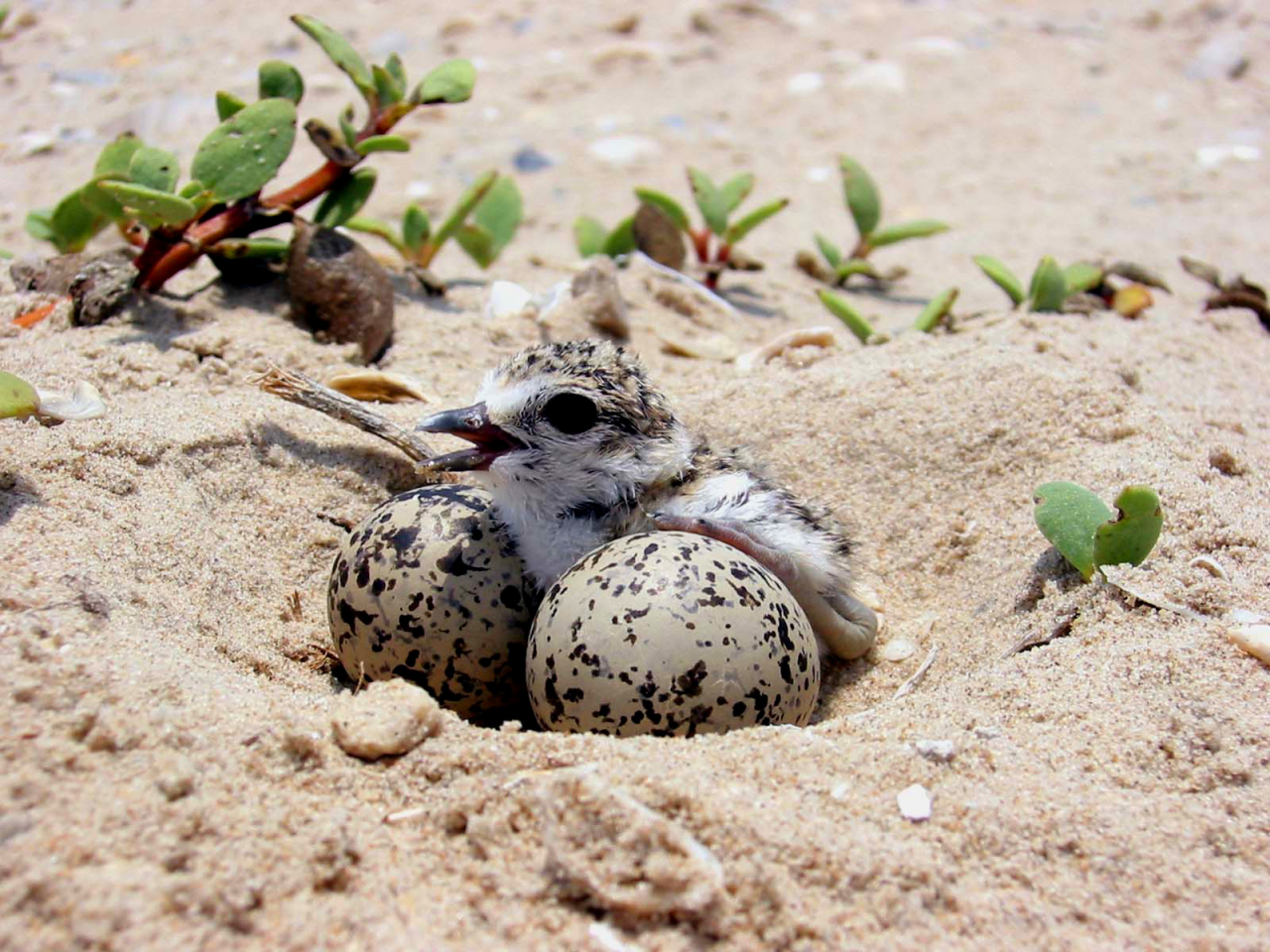June 18, 2020
Love is in the air on Disappearing Island, and the results are on the ground – in the form of nests.
Several least tern pairs and one pair of Wilson’s plovers have been discovered nesting on the popular boaters’ paradise near Ponce Inlet. These small shorebirds have nested on the island’s sandy beaches in the past with minimal success due to disturbances.
Wilson’s plovers are sandy brown with a white underside and heavy bills. These solitary birds hunt fiddler crabs and are vulnerable to disturbances. With restricted ranges, they seldom wander far from ocean coastlines. They are a species of greatest conservation need in Florida. Eggs incubate for 24 to 25 days and then the chicks will learn to fly in 31 to 35 days.
Least terns, which are listed as a threatened species in Florida, have a grayish-white body and a black-capped head, narrow wings, yellow legs and a yellow bill. They tend to nest in colonies and are aggressive in defending their nests. Least tern eggs incubate for 19 to 25 days, and chicks learn to fly in another 19 to 20. The males on Disappearing Island can be seen courting females with tiny fish and a nest-scraping ritual that would melt any woman’s heart.

Since both species lay their eggs directly on the sand and the flightless chicks will run only on the sand until they can fly, they’re no match for frolicking people and playful dogs that can destroy a nesting colony in moments. If the adult birds are frightened, they may fly off and leave the eggs exposed to predation and prolonged sun exposure.
Because least terns are protected by state and federal laws, Volusia County’s Environmental Management Division has posted signs on Disappearing Island advising people to stay out of the posted area and keep their pets on a leash. This is where residents can help.
“If you see people entering the posted area or letting dogs running off leash in the vicinity of the posted area, gently let them know their actions may harm the birds and that the eggs laid on the sand are camouflaged and difficult to see,” advised Jennifer Winters, Volusia County’s protected species manager.
If they continue to disturb the birds, report their activities to the Florida Fish and Wildlife Conservation Commission’s wildlife alert hotline at 888-404-3922, #FWC or *FWC on a cell phone, or by texting Tip@MyFWC.com. Residents can also report unposted nests to the hotline.
Disappearing Island, which is accessible only by boat, appears during low tide each day as the water recedes in the inlet between Ponce Inlet and New Smyrna Beach.


Volusia County Council
Media contact: Pat Kuehn, CPRC
Community Information Specialist
386-748-3989, ext. 12934